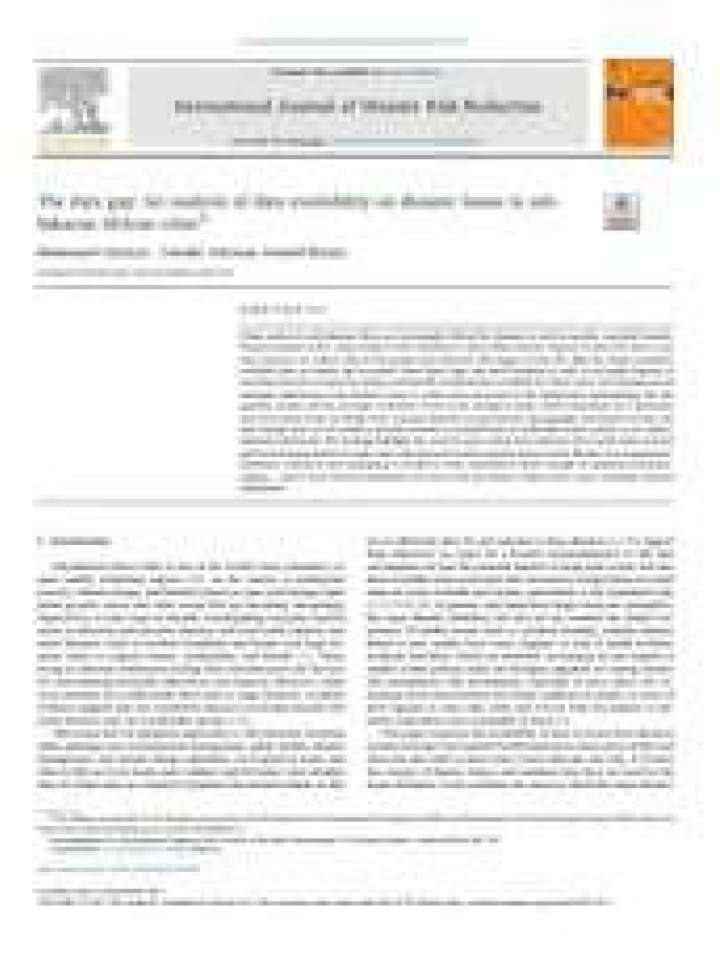The data gap: an analysis of data availability on disaster losses in sub-Saharan African cities
Urban centres in sub-Saharan Africa are increasingly affected by disasters as well as smaller, everyday hazards. Decision-makers in the region require better information about urban disaster impacts to plan how best to use their resources to reduce risks to the people most affected.
This paper reviews the different kinds of publicly available data on human and economic losses from large and small disasters as well as on health impacts of everyday hazards to assess the quality and breadth of information available for urban areas.
The findings reveal emergent information about disaster losses in urban areas generated by the DesInventar methodology, but the quantity of data and the coverage of disaster events is not enough to make robust conclusions for a particular city. Data about losses to health from everyday hazards are provided by demographic and health surveys, but their sample sizes are too small to provide accurate or detailed data on individual urban centres or on ‘slums’/informal settlements.
The findings highlight the need for more robust data collection that would assist national and local decision-makers to make more informed and location specific choices about disaster risk management. Systematic collection and cataloguing is needed to make information robust enough for planning and policy-making – and to have relevant information for each ward and district within urban areas, including informal settlements.
Explore further
